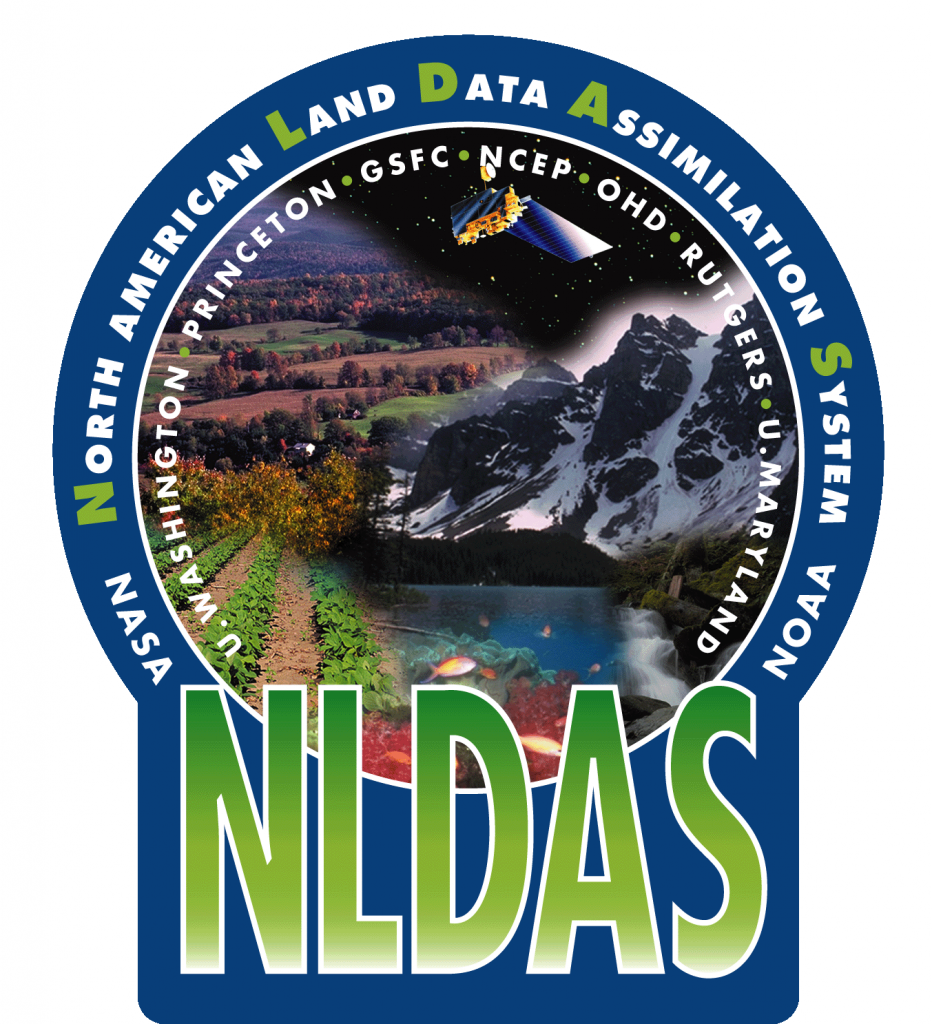
NLDAS: Project Goals
The goal of the North American Land Data Assimilation System (NLDAS) is to construct quality-controlled, and spatially and temporally consistent, land-surface model (LSM) datasets from the best available observations and reanalyses to support modeling activities. Specifically, this system is intended to reduce the errors in the stores of soil moisture and energy which are often present in numerical weather prediction models, and which degrade the accuracy of forecasts.
NLDAS is currently running operationally in near real-time (~4 day lag) on a 1/8th-degree grid with an hourly timestep over central North America (25-53 North). Retrospective hourly/monthly NLDAS datasets extend back to January 1979. NLDAS constructed a forcing dataset from a daily gauge-based precipitation analysis (temporally disaggregated to hourly using Stage II radar data), bias-corrected shortwave radiation, and surface meteorology reanalyses to drive four different LSMs to produce outputs of surface fluxes, soil moisture, snow cover, streamflow, etc.
NLDAS is a collaboration project among several groups: NOAA/NCEP's Environmental Modeling Center (EMC), NASA/GSFC's Hydrological Sciences Laboratory, Princeton University, the University of Washington, the NOAA/NWS Office of Hydrological Development (OHD), and the NOAA/NCEP Climate Prediction Center (CPC). NLDAS is a core project with support from the NOAA Climate Program Office's Modeling, Analysis, Predictions, and Projections (MAPP) program. Data from the project can be accessed from the NASA Goddard Earth Science Data and Information Services Center (GES DISC) as well as from the NCEP/EMC NLDAS website.

